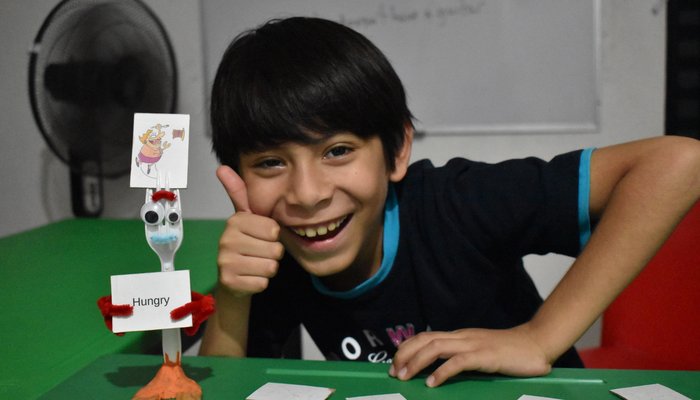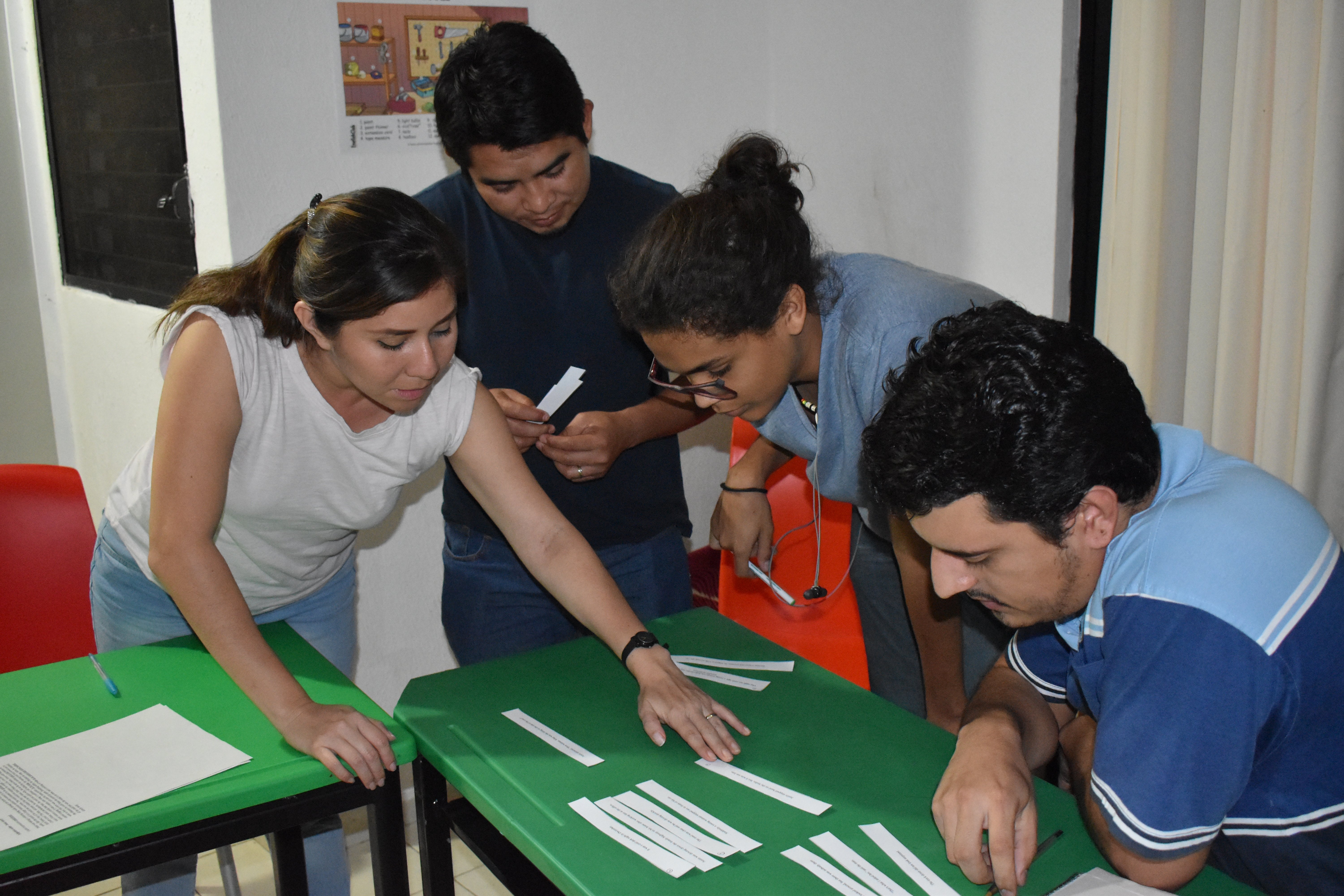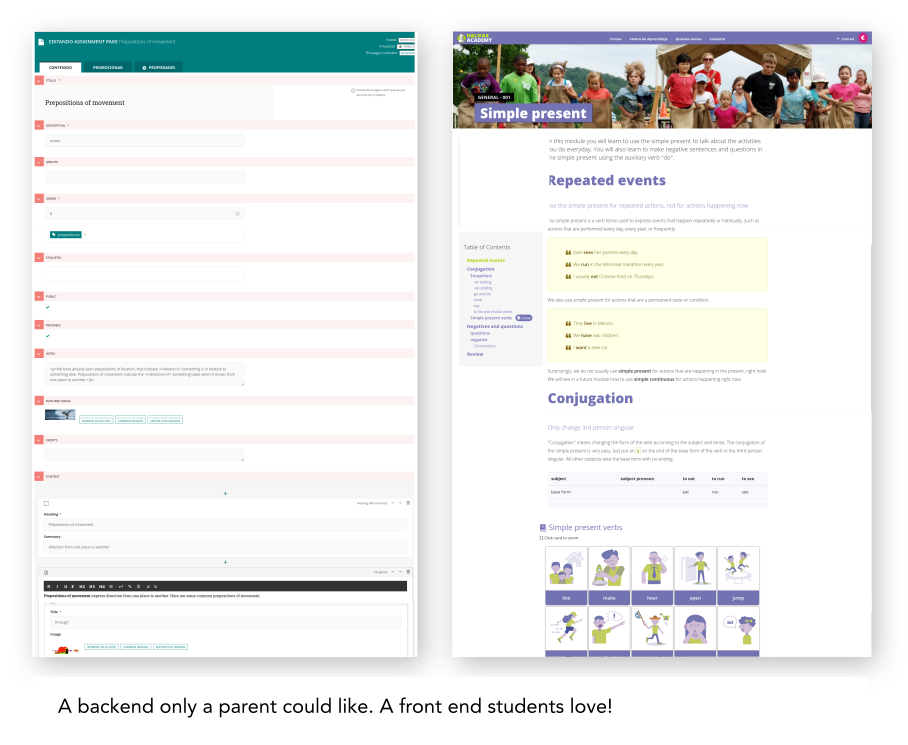
The personal e-learning classroom
Memories of good times in the classroom led Studio Canek to create our own content authoring software over lockdown
Back when we used to teach ESL in-person, we had a game the children loved. We'd watch a a Mr. Bean cartoon, and every time they saw an image of a new vocabulary word, they had to yell "stop" and make a sentence with the word. We played in teams and competition was fierce, the children sweaty and red-faced with excitement. Even the least enthusiastic English learners loved this game.
We had a game for teaching journalism too. We'd take an old radio script of mine, write the individual clips on cards, shuffle the cards and hand a set to each team. Their job was to arrange the clips in an order that told a story and made sense. Then, we'd listen to the original piece. Although I pointed out there is no "right way" to write a script, I can still remember the groans and laughter every time they heard the script deviate from mine.
Those games were the product of many hours spent with glue, tape, scissors, flashcards, posterboard, markers, string, found objects, strewn across the living room. They were fun to make and fun to run. They made our classrooms unique. Not better, necessarily, but ours.

When the pandemic hit, we stopped teaching in person. We decided to compile some of our teaching material into e-learning courses. We sought software that would allow us to express ourselves in the same way we did when we taught in person. Of course, we have used many of the big names in content authoring. We've messed about with the Moodle code and even installed an EdX instance (even when the developers themselves warn you against it!) These systems all have their place. They are fast and reliable. They're battle-tested, and you can be sure they will work. But for our own courses, our babies if you will, they just felt a little too... samey. Same flat aesthetic, same corporate fonts, same monochrome icons. And same quizzes. So many multiple choice quizzes.
That's why we created Xooc, our own LMS and content authoring system. (The name means classroom in Yucatecan Maya.) It's a small system built on the open source frameworks Django and Wagtail. We only use it in house. It has only had to handle a hundred or so concurrent users. In some ways, it isn't very sophisticated. The editing system looks a little clunky. Things don't zoom and wobble whenever you pass a mouse over them. But it lets us be us. We can tweak colors, fonts, layouts, images, icons, animations. If the content is hierarchical we can create any number of headings and subheadings, pull-out boxes, asides, rules and dividers. If it's narrative, we can flow the text around images, divide it into pages, augment it with media wherever we want, add an interactive glossary, allow learners to highlight passages. We decorate each site the same way a teacher decorates their classroom. No two classrooms are the same.

But the biggest advantage are the activities. When did multiple choice quizzes become the de facto standard in student evaluation? If we can dream it up, we can integrate it into Xooc. We've got audio activities that simulate the "Stop" game from our ESL days. Another game allows journalism students to recreate a radio script, just like we did with our journalism workshops. We're integrating the Ink game framework (behind several award winning video games) to build a choose-your-own adventure style interview simulator. Students can send us their voice. They can draw right in the editor. We've got multiplayer card games. We're working on adding voice recognition.
Xooc is still a work in progress. In fact it always will be. That's the beauty of it. We are always coming up with new ideas for presentation, interactivity and assessments, usually when we are right in the middle of creating content. We might switch between a word processor and code editor several times a day, programming new ideas, adding content to them, improving the code, thinking of some new content to add, and iterating. It's slow work of course, but then, so was creating our games with paper and pens. And we love it!